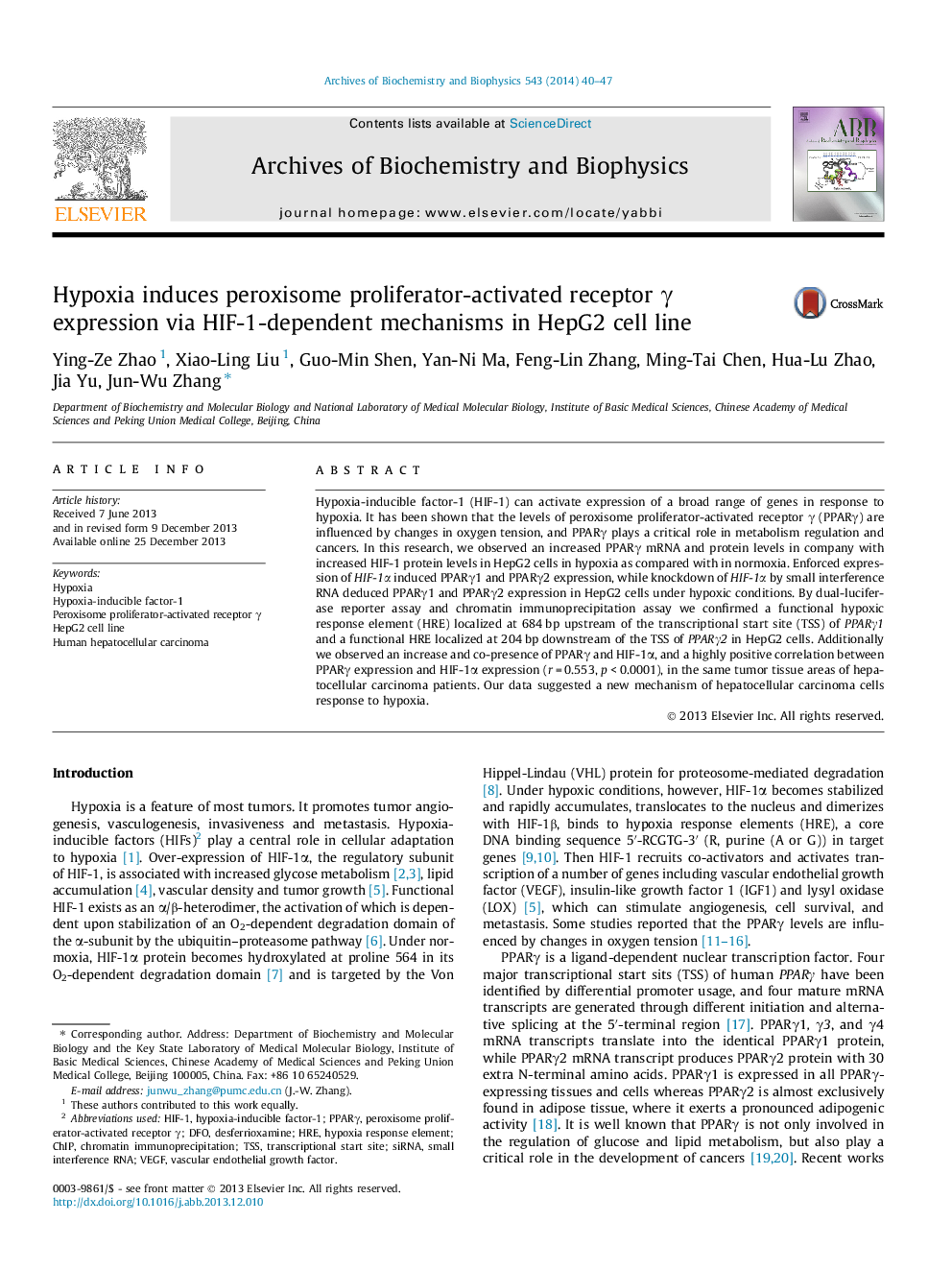| Article ID | Journal | Published Year | Pages | File Type |
|---|---|---|---|---|
| 8290356 | Archives of Biochemistry and Biophysics | 2014 | 8 Pages |
Abstract
Hypoxia-inducible factor-1 (HIF-1) can activate expression of a broad range of genes in response to hypoxia. It has been shown that the levels of peroxisome proliferator-activated receptor γ (PPARγ) are influenced by changes in oxygen tension, and PPARγ plays a critical role in metabolism regulation and cancers. In this research, we observed an increased PPARγ mRNA and protein levels in company with increased HIF-1 protein levels in HepG2 cells in hypoxia as compared with in normoxia. Enforced expression of HIF-1α induced PPARγ1 and PPARγ2 expression, while knockdown of HIF-1α by small interference RNA deduced PPARγ1 and PPARγ2 expression in HepG2 cells under hypoxic conditions. By dual-luciferase reporter assay and chromatin immunoprecipitation assay we confirmed a functional hypoxic response element (HRE) localized at 684 bp upstream of the transcriptional start site (TSS) of PPARγ1 and a functional HRE localized at 204 bp downstream of the TSS of PPARγ2 in HepG2 cells. Additionally we observed an increase and co-presence of PPARγ and HIF-1α, and a highly positive correlation between PPARγ expression and HIF-1α expression (r = 0.553, p < 0.0001), in the same tumor tissue areas of hepatocellular carcinoma patients. Our data suggested a new mechanism of hepatocellular carcinoma cells response to hypoxia.
Keywords
Related Topics
Life Sciences
Biochemistry, Genetics and Molecular Biology
Biochemistry
Authors
Ying-Ze Zhao, Xiao-Ling Liu, Guo-Min Shen, Yan-Ni Ma, Feng-Lin Zhang, Ming-Tai Chen, Hua-Lu Zhao, Jia Yu, Jun-Wu Zhang,
